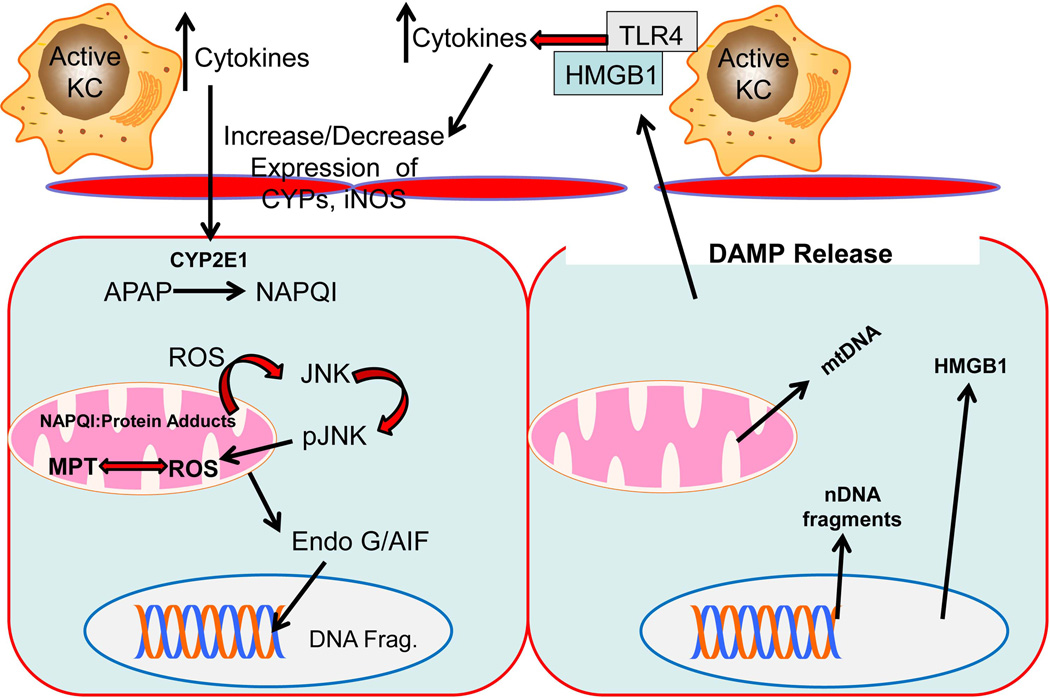Figure 3.
A simplified model of APAP toxicity. CYP2E1 converts APAP to NAPQI resulting in an intracellular oxidant stress. This results in phosphorylation of JNK and translocation of pJNK to the mitochondria. Translocation of pJNK amplifies the mitochondrial stress and causes the mitochondrial permeability transition pore. This results in release of nucleases such as endonuclease G and apoptosis inducing factor that cause DNA fragmentation. This results in cell death, causing release of DAMPs such as mitochondrial DNA, nuclear DNA fragments, and HMGB1. These DAMPs can then act on Kupffer cells, which secrete cytokines that can act on CYP2E1 by either reducing or increasing expression, resulting in magnification or reduction of the injury to subsequent hepatocytes. KC – Kupffer cell, APAP – acetaminophen, NAPQI – N-acetyl-p-benzoquinone imine, JNK – c-jun N-terminal kinase, Endo G - endonuclease G, DAMPs – damage associated molecular patterns, CYPs – cytochrome P450, AIF – apoptosis inducing factor, nDNA – nuclear DNA, mtDNA – mitochondrial DNA, HMGB1 – high mobility group box-1, TLR – toll like receptor, MPT – mitochondrial permeability transition pore, iNOS – inducible nitric oxide synthase, DNA frag – DNA fragments,

